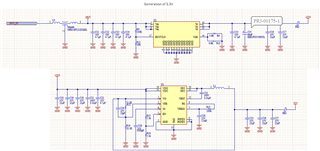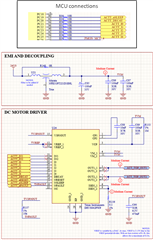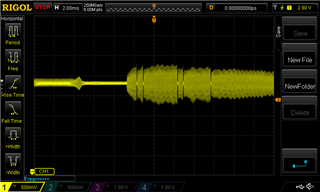Other Parts Discussed in Thread: TPS54429,
Hi there,
I've got 2x DRV8842's on my board which is powered from a 24V PSU. The IO lines IN1, IN2, I0, DECAY, nRESET, nSLEEP and nFAULT are connected to a 3.3V MCU. The IN1 and IN2 are being on/off driven (no PWM), current limits I0 I4 are set high, DECAY pin is high impedance (input at MCU), nSLEEP is set high, nFAULT is MCU input. The Vref is set using a potential divider from the V3P3OUT with R1=2.7k and R2=5.1k and so VREF is 2.16V giving a max current of 4.32A.
The DRV8842 is driving a linear actuator which runs fine but sometimes I'm seeing a significant dip on the 3.3V voltage regulator. Sometimes it is resetting the MCU due to a brownout reset. The 3.3V SMPS (TI part TPS54429) has a Vin of 12V and output of 3.3V. The dip always occurs when the actuators hit their end stop which is likely a high current point. We're working on preventing the actuator from hitting that mechanical end stop with position sensors and firmware but I still need to get rid of this chance of a voltage dip. Is there some situation that the motor driver loads the MCU pins enough to cause a load large enough to cause a trip on the 3.3V SMPS? Note that the SMPS is capable of providing 4.5A. The MCU is physically quite far away from the motor drivers and so I don't think it's a noise issue.
Any help you can provide me with will be really useful. Thank you, Louis




